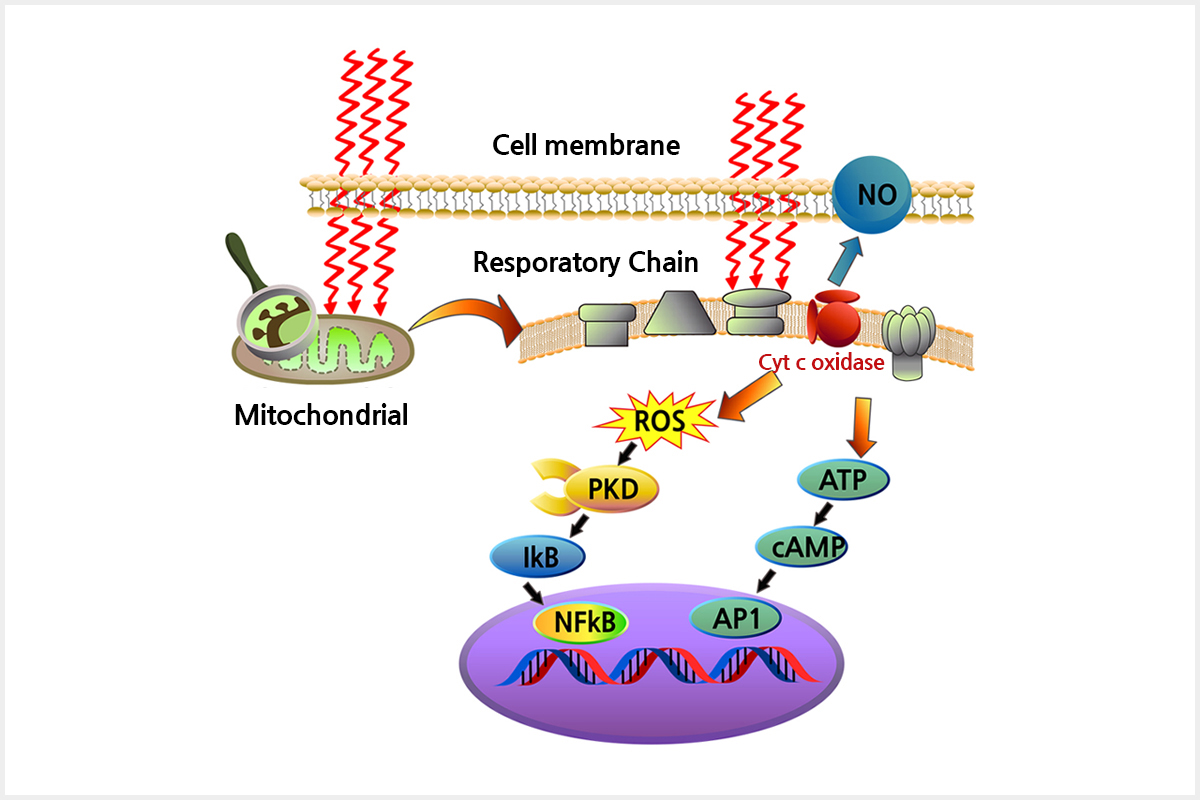The Ultimate Guide To Photobiomodulation
Wiki Article
The Single Strategy To Use For Photobiomodulation
Table of ContentsOur Photobiomodulation IdeasAn Unbiased View of PhotobiomodulationThe Basic Principles Of Photobiomodulation A Biased View of Photobiomodulation
Laser treatment is a clinical therapy that utilizes focused light to promote a process called. Throughout PBM, photons enter the tissue and communicate with the cytochrome c complex within mitochondria. This interaction activates an organic cascade of events that causes an increase in mobile metabolic rate, which can in addition to increase the healing procedure.There is consensus that the application of a healing dose of light to damaged or useless tissue causes a cellular action mediated by mitochondrial systems. Photobiomodulation. Researches have shown that these adjustments can impact discomfort and swelling, as well as, tissue fixing
Modifications in ATP, responsive oxygen species and nitric oxide comply with light absorption by Cc, O. These results are redox state and dosage dependent. In hypoxic or otherwise worried cells it has actually been shown lots of times that following, nitric oxide is launched, ATP is raised and oxidative stress is minimized [27-31]

See This Report on Photobiomodulation
PBM devices have been removed for advertising by FDA through the Premarket Notification/510( k) procedure as adjunctive devices for the momentary alleviation of discomfort. These clearances were based on the presentation of professional data to sustain such insurance claims (Photobiomodulation). In this treatment, a light source is put near or in contact with the skin, permitting the light energy (photons) to permeate tissue where it interacts with chromophores situated in cells resulting in photophysical and photochemical adjustments that bring about changes at the molecular, mobile and tissue levels of the bodyInterestingly, recent research indicates that light can enhance efficiency in normal tissues and cells. The possible applications of PBMT are many and are being discovered experimentally at the fundamental scientific research, pre-clinical and medical degree. The existing clinical uses are for the alleviation of discomfort and swelling and the therapy of sports injuries.

The therapy parameters and number of sessions needed for PBMT depend on location and cause. PBMT usually needs more see this page than one treatment for optimum discomfort alleviation. It might take a number of treatments for the results to end up being obvious. records that it can take anywhere from eight to you could check here 30 sessions for a treatment to be fully effective, and some individuals discover it necessary to undergo therapy two to 4 times weekly.
Photobiomodulation - An Overview
Treatment parameters for PBMT were originally developed utilizing cells artificial insemination and in small animal models. These treatment criteria usually had a reduced irradiance and fluence and functioned well for cutaneous applications. However when clinicians started to make use of PBMT to treat frameworks that lay much deeper in the body, they used these specifications with negative results.
We now comprehend that these unfavorable studies was because of wrong device and treatment criteria for transcutaneous treatment of deeper structures. Recent breakthroughs in laser therapy gadgets and even more research study right into the ideal dosages have substantially boosted the outcomes of PBMT. For dealing with deep tissues, the wavelength of light used identifies the depth of penetration right into a tissue.
It is essential that a medical professional utilizes the proper wavelength of light and criteria to deal with a problem. One wavelength and one set of treatment parameters will certainly not be efficient for all problems. Unfavorable side impacts have not been reported from the usage of PBMT.
A Biased View of Photobiomodulation
In the initial experiment, Dr. Endre Mester, made use of cut rats and observing exactly how the laser impacted their ability to grow hair contrasted see this site to the team that was not obtaining LLLT. He discovered that the team of computer mice receiving LLLT had the ability to expand their hair back faster than the group of mice that really did not get LLLT (Hoon C, et al; 2012).This therapy is called this method to separate the distinction in between the lasers some professions use to cut (eg. Low-level light therapy is pain-free, non-invasive treatment.
LLLT has a biphasic reaction, implying that lower doses are usually seen to be extra useful than greater dosages. That being claimed, dosages greater or lower than the ideal dose doesn't affect (Hoon C, et al; 2012). For this factor, it can be difficult to have research studies on LLLT with many specifications.
Some business incorporated the two (LED and laser) to provide an extra well-rounded therapy considering that lasers can pass through much deeper than LED and infrared light (Norman Doidge, The Brain's Way of Recovery, 2015). Throughout treatment, the area that is being dealt with is subjected to LED light from a Bio, Flex Laser, which goes to 660 nm wavelength, adhered to by infrared light at 830-840 nm wavelength.
Report this wiki page